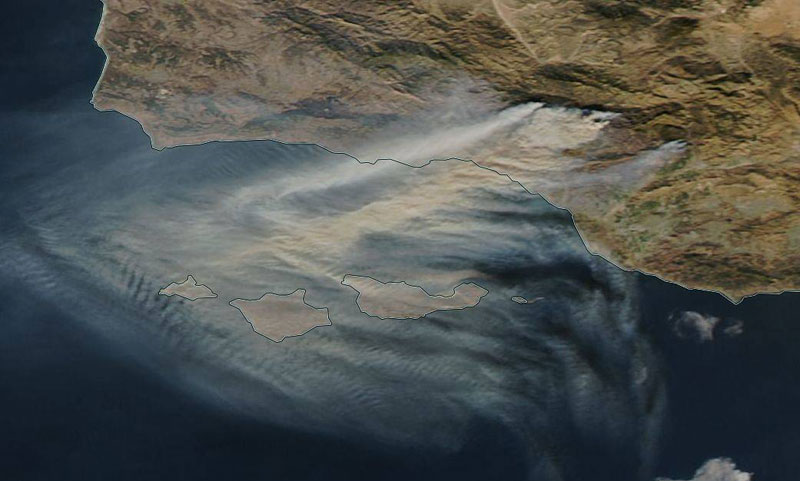
Brown smoke continues to spew from the Thomas Fire in this image captured by the Aqua satellite on December 14, 2017. A red flag warning which has been active for the last 12 days, the longest in California’s history, continues today.
The weather continues to be the catalyst for this fire. The worst possible conditions for fire growth are still in place. High winds with gusts up to 40 mph in Santa Barbara and up to 55 mph in Ventura County with low humidity at the 10-20 percent range will continue through Saturday evening. These conditions cause extensive fire growth, not to mention poor air quality due to smoke and ash in the area.Captions and image source: NASA
Excerpts;
Environmental models are showing that the effects of climate change could be much stronger by the middle of the 21st century, and a number of ecosystem and weather conditions could consistently decline even more in the future…
Read Full Article, Science Daily (12-14-2017)
Did climate change worsen the Southern California fires? The Atlantic (12-06-2017)
Seven of California’s 10 largest modern wildfires have occurred in the last 14 years. (The state began keeping reliable records in 1932.) Given the scale of the blazes, and their increasing regularity, it makes sense to ask: Does global warming have anything to do with this?..
Why the California wildfires are spreading so quickly? CNN (12-07-2017)
The Santa Ana winds that blow from the desert to the coast, an annual occurrence in Southern California, are more powerful than usual, with gusts of 80 mph expected in higher altitudes. In the lower levels, winds of 50 to 70 mph were likely.The winds can push a fire the length of a football field in a minute…








